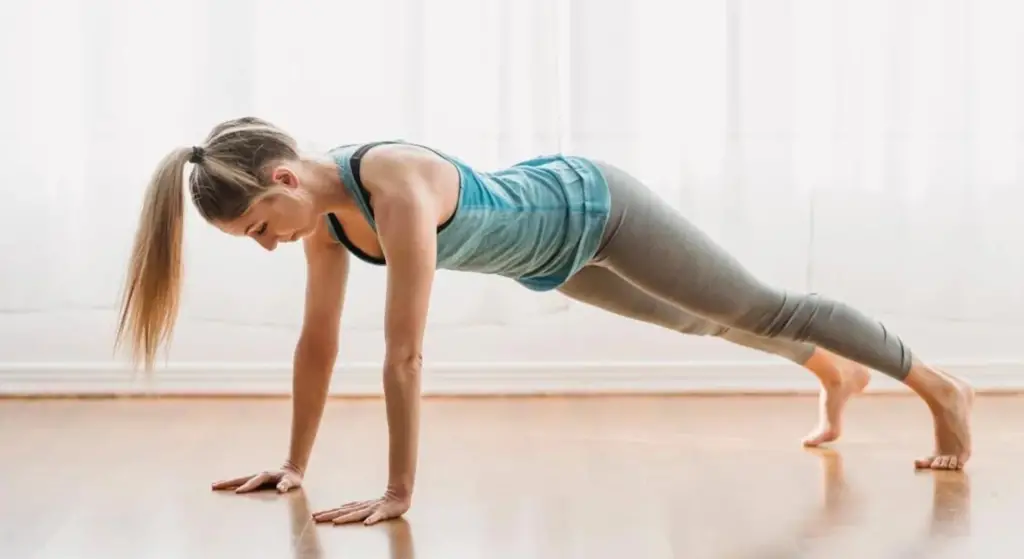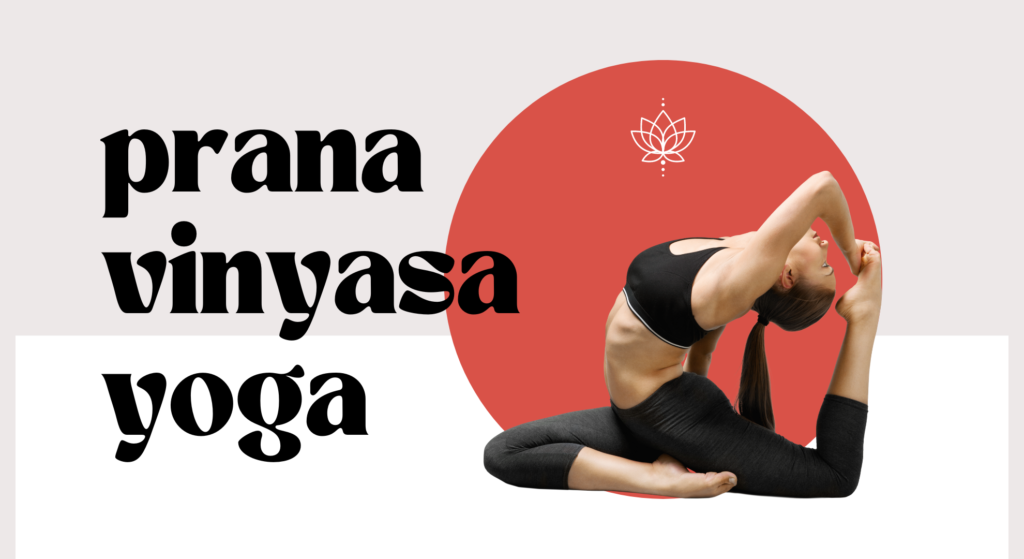
I used to think power yoga and vinyasa yoga were pretty much the same thing. They both involved flowing sequences of poses, right? Why would two very similar-sounding yoga styles even exist?
But when I tried a power yoga class after years of vinyasa flows, I was quickly overwhelmed. The intensity, the pace, and the focus on strength and sweat just seemed on a different level!
That’s when I realized power yoga and vinyasa yoga may share some common DNA in their dynamic sequencing, but they have evolved into very distinct modern styles. Understanding those differences is key to choosing the best practice for your needs and fitness goals.
What Exactly Is Power Yoga?
Power yoga bursts onto the scene in the 1990s as a fitness-focused take on classic asana sequences. Pioneered by influential instructors like Bryan Kest and Beryl Bender Birch during the era of step aerobics and Tae Bo, power yoga cranked up the intensity dial.
- The sequences still follow the flow of Ashtanga and Vinyasa progressions but with an emphasis on strength, flexibility, and cardiovascular benefits
- Classes are faster paced with more advanced poses and longer holds
- There tends to be no pause between postures as you move rapidly from one to the next
- Sweating is pretty much guaranteed!
This modern form of yoga sculpted hard bodies with challenging flows. However, the athletic practice still aims to cultivate mental focus and self-awareness along the way.
What Is Vinyasa Yoga?

Vinyasa yoga developed around the same time as power yoga in the late 20th century but with a slightly different focus. The term vinyasa refers to the connection between movements and breath, coordinating them in a flowing sequence.
- Vinyasa classes string together yoga postures into a continuous flow, directing attention to the breath
- Sequences are sometimes called “breath-synchronized movement”
- There is variation in the pace – faster flows compared to holding postures
- The intensity comes more from the effort of concentration than cardiovascular demand
The Complete Guide to Ashtanga Vinyasa Yoga Sequences
While vinyasa flows can still challenge strength and flexibility, they emphasize the mind-body connection more than power yoga’s athletic training. Teachers cue connections between breathing patterns and how you align your body in each pose. The sequences are often choreographed like dances.
Common vinyasa systems used in studios today include:
- Ashtanga Yoga – An athletic and vigorous sequence of 6 series of poses established by Sri K. Pattabhi Jois
- CorePower Yoga – Fusion-style classes set to music drawing from multiple yoga traditions
- Jivamukti Yoga – Spiritually-influenced classes that seamlessly connect yoga postures and meditation
Now that we have covered the origins and styles of both power yoga and vinyasa yoga separately, we can compare the two more directly.
Comparing the Poses and Sequences
When you break down power yoga vs vinyasa yoga into their essential flowing sequences, some more differences emerge:
Power Yoga Sequence Style
- Intervals – Short bursts of strength work sandwiched between heart-pumping flow series
- Circuits – Multiple rounds of sun salutations mixed with other challenging postures
- Continuous Flow – Constant dynamic movements building internal fire and testing endurance
Power yoga cranks up the heat, the speed, and the difficulty level compared to most vinyasa sequences. The flows aren’t about meticulous alignment or mastering subtleties. Expect a good upper body workout holding poses like plank and down dog for extended periods.
Vinyasa Yoga Sequence Style
- The breath always leads the movement progressions in vinyasa yoga
- Sequences are generally smoother and more dance-like
- Teachers pause for longer stretches in poses like pigeons, allowing you to sink into subtle sensations
- The heat and effort come from concentration and awareness, not just physical demands
Yes, some vinyasa flows like Ashtanga rocket through sequences rapidly. But the pace tends to oscillate more fluidly with slower stretches woven throughout. There may even be longer guided meditations separate from the physical postures.
Direct Comparison of Sequences
- Power yoga flows relentlessly and transitions from pose to pose, whereas vinyasa alternates flowing with holding postures
- Vinyasa focuses more directly on the mind-body connection and breathwork
- Power sequences are more likely to use weights, resistance bands, or other equipment
- Vinyasa classes encourage using props like blocks or straps to help with alignment
- Power yoga flows drive intensity through heat and effort, while vinyasa builds internal heat more slowly
Evaluating the Benefits of Each Style
Both power yoga and vinyasa yoga offer tremendous physical and mental benefits from their flowing sequences. But their different areas of emphasis deliver some distinct advantages.
Benefits of Power Yoga
- Increased Strength & Muscle Tone – Holding poses like crow, pistol squat, and side plank will make you stronger over time
- Weight Loss – High-intensity flows rev up metabolism and burn major calories
- Detoxification – The heat and effort help wring out toxins and impurities
- Greater Flexibility – Pushing to your edge in folds or binds will gradually add a range of motion
Devoted power yoga practitioners rave about its transformative effects on building lean muscle and athletic performance. Expect to sweat out stress and give your body a powerful workout.
Benefits of Vinyasa Yoga
- Stress Reduction – Slowing down to connect movement with breath calms the nervous system
- Mind-Body Awareness – Following subtle physical sensations sharpens self-attunement
- Healthier Breathing Habits – Conscious breathing practices enrich vitality
- Improved Circulation – Gentle heating and compression stimulate blood flow
Vinyasa yoga may not burn as many calories or get your heart rate soaring quite as high. But its mindful approach cultivates incredible mental clarity and equanimity. The flowing sequences also enhance healthy body functioning.
Direct Comparison of Benefits
- Power yoga leans into physical conditioning, while vinyasa emphasizes the mind-body connection more
- Power provides a targeted workout for athletes, vinyasa offers stress relief through a moving meditation
- Balancing higher-intensity power flows with slower mindful vinyasa classes allows you to receive the full range of yoga benefits
Is One Style Better for You?
With all of their differences laid out, should you choose power yoga or vinyasa yoga? Or even try to incorporate both into your routine? Here are some factors to help decide:
Key Points to Consider
- Current fitness level and mobility restrictions
- Goals for building strength, endurance, or flexibility
- Any injuries or physical limitations needing accommodation
- Personal temperament and ability to push past discomfort
- Complementary types of exercise or mindfulness practices
Power yoga and vinyasa yoga both deliver results but play to different strengths. Choose the style that aligns best with your current needs and abilities first, then consider blending together over time.
Who Might Prefer Each Style
- Beginners often thrive more with Vinyasa’s guided pace and gentle learning curve
- Athletes/Fitness Buffs gravitate toward power yoga’s intense full-body training
- Stressed Out Workers need vinyasa’s restorative, meditative releases
- Those Seeking a Balanced Practice supplement vigorous power flows with mindful vinyasa classes
Of course, any student can start with either style and evolve their practice over time. But pay attention to what your body and mind require today before automatically defaulting to the most intense workout.
Conclusion
Power yoga and vinyasa yoga share an emphasis on flowing sequences of movement connected by breath. But they direct that core DNA towards different ends, delivering distinct benefits through separate styles.
Power flows provide demanding strength and endurance training for physical fitness. Vinyasa classes offer stress relief through a more meditative, mindful experience. Sampling both can give you the best of both worlds!
Ultimately power and vinyasa ask you to bring awareness to each present moment expressed through your body in motion. By better understanding their differences and similarities, you can craft a balanced yoga practice tailored just for you.
